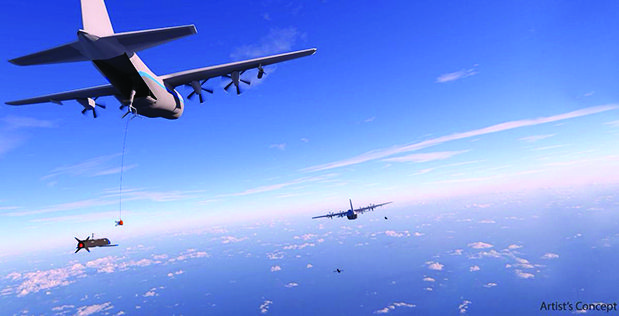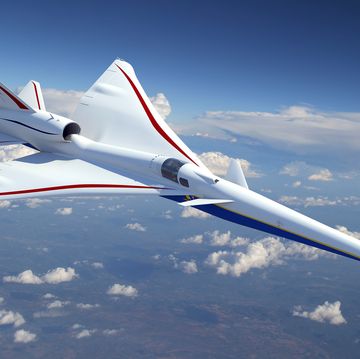Britain wants to build an air fleet of drones designed to overwhelm an enemy’s air defenses, allowing other aircraft to slip through and strike targets with impunity.
U.K. Defense Secretary Gavin Williamson has said the unit, composed of hundreds of drones, will be operational by the end of 2019. Truth be told, though, that's too optimistic for the world of defense procurement—especially a program that relies on bleeding-edge drone-swarm tech.
Williamson says he wants to create a “concept unit” within the Royal Air Force equipped with hundreds of flying drones “capable of confusing and overwhelming enemy air defenses." The drones would be linked to a common network and driven by artificial intelligence to identify and then attack enemy defenses.
Picture a C-130 transport plane ejecting two dozen swarm drones near the edge of the aerial battlefield. The drones know which flight path a manned RAF strike plane is scheduled to take and could fly over the route to search for enemy air defenses, particularly radar emissions and visual signs of air defense networks. The drones could then coordinate an attack on radar sites, anti-aircraft missiles, command centers, and other potential targets, creating a safe zone for manned aircraft to pass through.
Here’s a DARPA video showing off the American drone-swarm concept, known as “Gremlins”:
This technology is being pursued by other air forces, including the U.S. Air Force. Unfortunately, much of it, including the ability to control drone swarms and autonomously coordinate attacks, is still in the early phases and years from becoming a reality. Currently, no air force has the ability to execute a drone-swarm attack. There is basically no chance the U.K. will be able to field such a unit “by the end of the year."
The Guardian reports that Williamson pledged £7 million ($9 million U.S.) toward creating the unit. That is nowhere near the cost needed to research, develop, and field “hundreds” of drones. The true cost will likely be at least two orders of magnitude higher. Meanwhile the U.K.’s local drone industry has struggled, with the Thales Watchkeeper drone—pretty much a duplicate of the late-1990s-tech MQ-1 Predator drone—five years behind schedule.
Drone swarms such as what Williamson wants are inevitable, because it makes sense to have unmanned aircraft do the most complicated, dangerous air missions. But the Royal Air Force won’t be getting them any sooner than the rest of the world.
Via the Guardian

Kyle Mizokami is a writer on defense and security issues and has been at Popular Mechanics since 2015. If it involves explosions or projectiles, he's generally in favor of it. Kyle’s articles have appeared at The Daily Beast, U.S. Naval Institute News, The Diplomat, Foreign Policy, Combat Aircraft Monthly, VICE News, and others. He lives in San Francisco.













